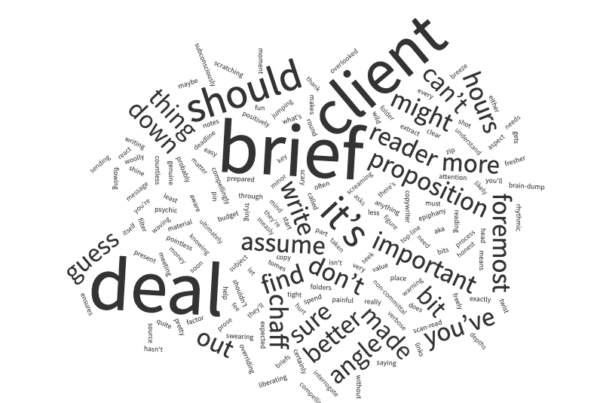Yes, there are common principles. There are things we can all agree on as constituting ‘wow’, ‘pretty good’, ‘not very good’, or ‘dreadful’. But please, please, please… can we stop with the ‘ten simple steps to copy nirvana’, the ‘sure-fire techniques for creating powerful content’ and all the other fast lane and short-cut throwaway articles? Can we?
Or, at very least, can we admit that they’re helpful pointers at best, and that writing by numbers doesn’t make you a dependable creative writer. Like a guitar songbook, these guides can get people started, and sound competent a lot quicker than they would without a helping hand – as long as they adopt specific techniques and follow strict patterns. But put a writer who’s only ever used a few ‘how to write great copy’ guides (or the budding guitarist who’s only ever used ‘learn the Beatles’ songbooks) up against experienced people who’ve written or strummed for the sake of it, for themselves, for years – and they will suffer. Truly creative and versatile people learn more from their mistakes, cyclical self-doubt and dogged perseverance – and the breakthroughs that follow – than they will ever gain from short guides online or in print.
The least we can do is make it clear that there are no simple formulas or shortcuts to great business writing. Basic principles that can improve it, maybe, but that’s about it. If anything, the best copy comes from running wild and bucking the trends – but only if there’s a baseline of experience and an ingrained appreciation for those basic principles that become second nature through years of applying them.
Ultimately, we need to recognise that the best writers have all failed miserably, spent weeks or months in the creative wilderness doubting themselves inside out, and have learned more from that than they could ever express in a formula. Those writers know how hard it is to actually define good business writing – they just do it, and don’t usually feel the need to quantify it in a hastily-written ‘thought piece’ to get a few likes on Twitter or LinkedIn.
I guess what I’m trying to say is, there’s no short cut. No crib sheet. No copy by numbers. I’ve been writing for all kinds of businesses all over the world since 2007, with a leading copy agency and as a freelancer, and I still struggle sometimes to explain what I do, how I do it, and why it matters so much. But every now and then I hear myself talking to clients or friends about what I do, and I realise I’ve only recently reached a position in my career where I can just about talk with confidence and authority about what I do. And there’s the distinction: Not what a copywriter does. What I do… For me, that’s the only way to look at it. Sure, I’ve learned from many others over many years, but what I do comes from me, and my experience. That’s really the only meaningful and honest context I can give it.
I occasionally provide short workshops that cover some simple ways to improve business writing. Does that contradict everything I’ve just said? No, because I don’t dress it up as ‘this will make you a good copywriter.’ I always stress that it’s nothing more than an itinerant and very basic insight into what an experienced copywriter does, and the difference it can make.
Anyway, the upshot is, I think many of these ill-thought-out formulas and quick guides to creating great copy actually trivialise the art – and detract from its importance for those who have genuinely groundbreaking, useful or interesting things to say.




